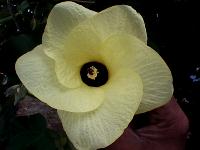
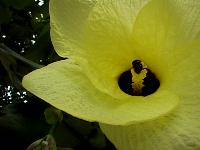
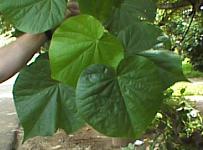
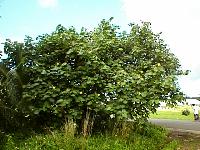
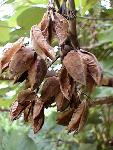
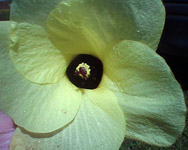






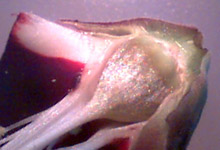

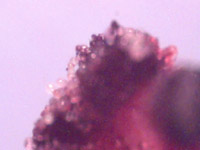
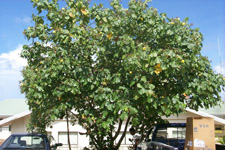
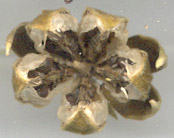
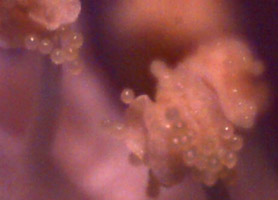
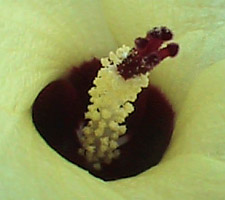
Synonym: Pariti tiliaceus.
Family: Malvaceae
Chamorro: Pago
Chuukese name: Sinife
English name: Beach Hibiscus
Hawaiian name: Hau
Kosraen name: Lo
Pohnpeian name: Keleu
Yapese name: Gal
Location collected: Beside Nihco store, Paes, Palikir.
Date collected: Deccember 1, 1998
Collected by: BN
Vegetative description: Ovate-Cordate leaf shapes, Mucrunate leaf tips, leaf arrangement is alternate which is pinnately compound on its venation.
Floral description: Yellow flowers with five corolla and calyx and also one style with a dark brown stigma. The flower also sometimes forms a funnelform corolla before it gets bloom.
Seed or fruit description (optional): Seeds or friuts are black or sometimes brown in color including the seed code which breaks apart into four when its getting weaker and ready to fall from the tree.
Pohnpeian name: Koaloau/kolou
The Hibiscus tiliaceus or koaloau is an important plant to the people of Pohnpei ever since a long time ago. Pohnpeians use almost every part of the plant for certain cultural purposes. A long time ago, there were no clothes on Pohnpei, so the people had to dry the inner bark in order to make grass-skirts. Back then, grass-skirts were used as clothes, but today they are made specifically for cultural dances and displays. Aside from being made into grass-skirts, the slimy, inner bark of the plant is used for the sacred ritual of preparing the local sakau or kava. This inner bark is separated from the outermost bark, rubbed with water, and then it is used to squeeze the sakau.The inner bark of the hibiscus and the sakau work together to form a very significant part of our culture which is the preparation and drinking of sakau. The hibiscus tree is also necessary for healthy sakau production. These trees are cut down on growing sakau in order for the sakau to grow faster and bigger. Furthermore, the bark is important for yam production. Pieces of the bark are dried and tied together for farmers to use. Farmers help the vines of their yams climb up trees by tying one end of the tied barks to the base of the vine, and the other end in a tree. As the vine grows higher, it twirls around the tied barks all the way up into the tree.
The leaves of the Hibiscus tiliaceus is also important for food preparation. Smashed or pounded local food are wrapped in the leaves before being cooked. Some people also cover their cooking pots with hibiscus leaves before cooking their food. The leafbuds too, are very important because they are used as some form of medicine by the people of Pohnpei. When a person has a swollen skin bruise, the leafbuds are crushed, wrapped in a piece of cloth, and put in a cup half-filled with water. The person then gently massages the swollen bruise with the wrapped medicine. It is kept wet, and used over and over until the bruise is no longer swollen. The leafbuds are also used for some superstitous beliefs in Pohnpei. For instance, if a group of people are going to do a cultural display before a large crowd filled with strangers, they usually take a shower with water that contains crushed leafbuds before the sun rises on the day of the display. It is believed that this shower helps take away nervousness, and any other feeling that may interrupt one's concentration. The yellow flowers of the hibiscus plant is used mainly for head leis or mwaramwar and other forms of decoration. The stems, when alive, are used for carrying things like yams, breadfruits and other heavy farm products. A long pole used for breadfruit climbing is also made from the hibiscus tree. However, when the trees are dead, the stems can sometimes be used as firewood. Finally, the Hibiscus tiliaceus is very important for the people of Pohnpei because almost every part of serves some special purpose.
Silverina Pretrick